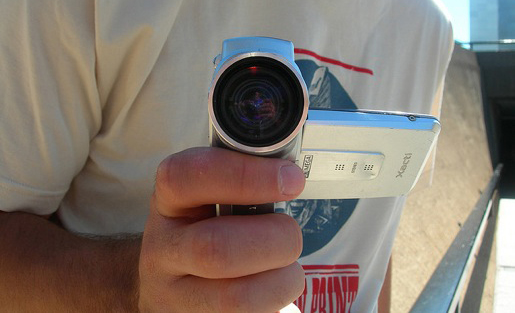What kinds of opportunities are opening up for filmmakers and journalists in short-form video on news sites? The field is expanding rapidly, though most folks are still in experimental mode.
At a panel at 100Reporters’ “Double Exposure” symposium in Washington, D.C., digital video programmers from several news media outlets explained how they’re building knowledge, brand and capacity at the same time.
Aid from in-house productions.
Although wildly different from each other, they all said that video was garnering more traffic than anyone had expected, and that their units were becoming more important within their companies. The Atlantic’s video team for instance just doubled from five to 10. Work is typically fact-checked and vetted like any other journalistic effort. They often work closely with an audience development team.
All of them still depend more on in-house production, but are reaching out selectively to independent filmmakers. Only one, AJ+’s Michael Shagoury, could put out a number ($10-15,000 per work), and none could get specific about the relationship at this early stage.
Kasia Cieplak-Mayr von Baldegg from The Atlantic described a largely in-house effort that produces a wide variety of work, often but not always tied to written work. It ranges from a profile by staff writer Jeff Goldberg of Louisiana’s Angola prison to the “If your body could talk” health series.
At public TV series POV, Emma Dessau said, digital work stands apart from the TV series, largely commissioned and produced with private foundation funds; POV also pays independents licensing fees. Work is always interactive, and, she said, is most successful when originally conceived as an interactive project. Among them are the Whiteness Project, 89 Steps, and Immigrant Nation.
Innovative sources and platforms.
At the Guardian US, Valerie Lapinski works with UK video commissioner Charlie Phillips to produce or commission work linked to The Guardian’s journalism and identity. “We’re not as big as many news outlets in the U.S., so we can’t compete directly with them,” she said. “So we try to stand out with quality and a distinctive voice in what we do.” She pointed to a project to document all police killings in the U.S., The Counted.
Sky Dylan-Robbins at The New Yorker discussed the need to have an angle true to the magazine’s quirky character on a topic, and the value of a cinematic approach, whether for an investigative piece or a portrait. As an example she showed “The New Yorker version” of a cat video.
Michael Shagoury from AJ+, the digital arm of Al Jazeera, discussed the challenge of producing work for different platforms. Facebook draws a lot of traffic, he reported, and YouTube—where documentaries go—not so much. What works, he said, is short, fast, and engaging, with a lot of text onscreen. AJ+ is finding that a presenter-led format (think Vice), which allows easy exposition, is most popular. AJ+’s docs are short, about 7-10 min, and commissioned from filmmakers around the world, often through the platform Storyhunter; they are character-driven, focused on Al Jazeera mantra–giving voice to the voiceless.
Greg Veis from the Huffington Post magazine Highline is developing an interactive journalistic-documentary format, with a mix of text, photos and video, activated with a scrolldown. Some of its stories have topped the charts of HuffPo stories in a week. While production is in-house, journalists come to them with stories from outside as well as internally, and are paid standard magazine freelance prices.
 This post originally appeared on the the site for the Center for Media & Social Impact, School of Communication, American University. Patricia Aufderheide is University Professor and Director of the Center for Media & Social Impact, School of Communication, American University, and co-author with Peter Jaszi of “Reclaiming Fair Use: How to Put Balance Back in Copyright” (University of Chicago Press). You can give feedback at [email protected].
This post originally appeared on the the site for the Center for Media & Social Impact, School of Communication, American University. Patricia Aufderheide is University Professor and Director of the Center for Media & Social Impact, School of Communication, American University, and co-author with Peter Jaszi of “Reclaiming Fair Use: How to Put Balance Back in Copyright” (University of Chicago Press). You can give feedback at [email protected].

